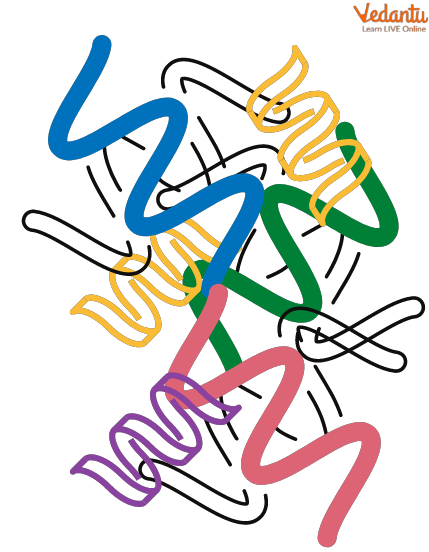




Why Understanding Protein Composition Matters for Students
Protein, carbs, and fats are the three essential nutrients in the diet. Nutrients are substances everybody needs to function. Protein can be found in plants and animals, including meat, fish, eggs, beans, nuts, and grains. Protein composition is necessary for the body to carry out various tasks. Some proteins aid in the regulation of bodily functions. Others move substances from one location in the body to another. Collagen, which aids in giving cells structure, comprises proteins. Proteins called antibodies are used to fight infections and diseases.
What is Protein?

Protein Structure
Proteins are big, complicated molecules that do many essential things in the body. They do most of their activity inside cells and are necessary for developing, maintaining, and controlling the body's tissues and organs. Proteins serve various functions. For example, collagen is a protein that gives cells structure. The proteins that fight infections are antibodies. It includes enzymes that help in digestion and cell growth.
Composition of Plasma Proteins
About 90% of plasma comprises water, the other 10% includes ions, proteins, dissolved gases, nutrient molecules, and waste. Some of the proteins in plasma are antibody proteins, coagulation factors, and the proteins albumin and fibrinogen, which keep the osmotic pressure of the serum at the right level. Each can be taken apart to make different blood products to treat various health problems. For example, clotting factors are used to treat conditions like haemophilia and spread intravascular coagulation that affects how blood clots.
Elemental Composition of Proteins
Amino acids are the building blocks of protein, and each amino acid contains five different elements: carbon, hydrogen, oxygen, nitrogen, and sulphur. There are twenty distinct kinds of proteins and three distinct categories of amino acids, each of which may be found in proteins.
Determination of the Amino Acid Composition of Proteins
By amino acid analysis at the C-terminus - The most common way to find the last amino acid is to add carboxypeptidases to a protein solution, take samples at regular intervals, and look at a plot of amino acid concentrations versus time. You can use this method to find the last amino acid.
Or, to find out what amino acids are in a protein, an acidic environment is used to break down a very clean sample into amino acids. The molecular weight of the protein and the amounts of the different amino acids tell us what amino acids are in the protein.
Conclusion
Proteins are necessary for life. The quality and digestibility of the proteins people eat shouldn't be a problem because most people eat various foods as long as the total amount of protein they consume satisfies their daily needs. We should choose protein-rich foods since they supply needed amino acids and help us maintain a balanced and sustainable diet.
FAQs on Protein Composition: Structure and Importance
1. How much is too much protein for kids?
Experts say that children between 6 and 24 months should get no more than 15% of their energy from protein. This means 30–45 grams per day, depending on how much energy is needed.
2. Which two types of proteins are found?
Proteins are of two types: complete and incomplete. Proteins consist of amino acids. Meat, fish, poultry, dairy, and soy are complete proteins. Incomplete proteins lack essential amino acids. Beans, grains, nuts, and veggies are examples.
3. In which food items can you find protein?
Animal-based foods like meat, poultry, fish, eggs, and dairy are good sources of complete proteins, while plant-based foods like fruits, vegetables, grains, nuts, and seeds often lack one or more essential amino acids.





















